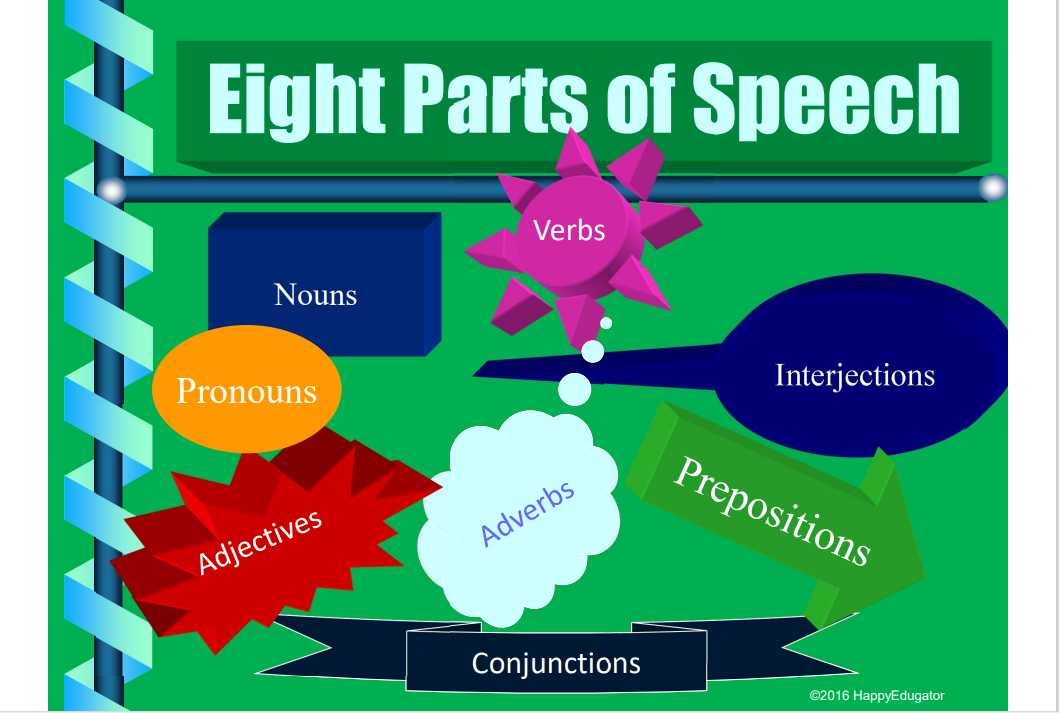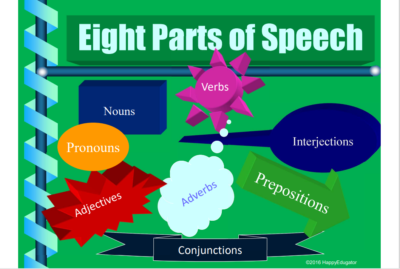Ever stopped to think about what makes the English language tick? It’s all about the parts of speech! These are like the building blocks of every sentence, giving meaning and structure to our words.

Understanding these eight parts of speech isn’t just for grammar nerds. It’s the secret sauce that helps you write clearer, more effective text, and aids in understanding what others are saying. When you get a grip on these basics, English starts to make more sense—whether you’re crafting an email, writing an essay, or just trying to keep up with a quick chat.
We’ll touch on nouns, pronouns, verbs, adjectives, adverbs, prepositions, conjunctions, and interjections. This isn’t some boring grammar lecture. Think of it more like getting to know a toolbox where each tool has a specific job to make your sentences come alive.
Stick with me as we explore each one, with examples and tips that’ll help you use them like a pro. By the end, you’ll see how much punch a well-crafted sentence can pack. This is just the start on your journey to mastering English language skills.
Exploring the Eight Essential Parts of Speech
Let’s break it down: when we talk about parts of speech, we’re talking about the role each word plays in a sentence. Think of each part as a unique ingredient that adds flavor and depth to our sentences.
So, what are the parts of speech? Here they are—nouns, pronouns, verbs, adjectives, adverbs, prepositions, conjunctions, and interjections. Each one does something special to sculpt a sentence, making it convey exactly what you mean.
| Part of Speech | Description |
|---|---|
| Noun | Names a person, place, thing, or idea (e.g., teacher, city, book, freedom). |
| Pronoun | Replaces a noun to avoid repetition (e.g., he, she, it, they). |
| Verb | Expresses an action or state of being (e.g., run, is, write, become). |
| Adverb | Modifies a verb, adjective, or another adverb, often indicating how, when, where, or to what extent (e.g., quickly, very, well). |
| Preposition | Shows the relationship between a noun (or pronoun) and other words in a sentence (e.g., in, on, by, with). |
| Conjunction | Connects words, phrases, or clauses (e.g., and, but, because, although). |
| Interjection | Expresses emotion or a sudden feeling, usually standing alone (e.g., Wow!, Ouch!, Oh!). |
| Adjective | Modifies or describes a noun or pronoun (e.g., blue, tall, happy). Articles (a, an, the) are special kinds of adjectives. |
Ever seen a sentence without a noun or a verb? It’s like a pizza without cheese—not really doing its job. Nouns tell us what or who we’re talking about. Verbs let us know what actions are taking place or set the overall state.
Pronouns come in clutch when you don’t want to keep saying the same word over and over. They keep things from getting super repetitive. Adjectives and adverbs spring into action next, adding some pizazz and detail to our descriptions.
Prepositions weave extra elements into your sentences by showcasing relationships, while conjunctions are the glue keeping everything connected smoothly. And interjections—well, they’re those little exclamations that add a punch of emotion when needed.
Grasping the role of each is all about setting yourself up to express whatever you want, whenever you want. This means breaking beyond just tossing words together and truly understanding how they enhance what you’re conveying.
In-Depth Breakdown of Each Part of Speech
Nouns are the cornerstone of our sentences. They help us label the world, covering everything from people and places to ideas and objects. Think common nouns like ‘city,’ proper nouns like ‘London,’ and abstract concepts like ‘freedom.’ Spotting them is about recognizing names and things.
Pronouns step in to streamline our sentences. Instead of repeating ‘John’s car,’ you’d say ‘his car.’ You’ll encounter personal pronouns (like ‘she’), possessive ones (like ‘hers’), and even reflexive ones (like ‘myself’). Keep an eye out for mix-ups, like mismatched pronouns and nouns.
Verbs are action-packed. They show what’s happening—running, thinking, being. Beyond clear actions, they also express states with linking verbs like ‘is’ or ‘seems.’ And don’t forget auxiliary verbs—’have’ or ‘will’—that help convey precise meanings through different tenses.
Adjectives are all about adding color, size, and quality to nouns. They transform a simple ‘house’ into a ‘big, blue house.’ Keep them close to the nouns they modify to ensure clarity and impact in your writing.
Adverbs take it a notch up by modifying verbs, adjectives, or even other adverbs. They tell us how, when, where, and to what extent. Words like ‘quickly’ or ‘very’ add layers but be cautious about overuse—it can clutter your writing.
Prepositions are small but mighty, showcasing relationships between entities. They introduce phrases like ‘on the table’ or ‘during the morning.’ Getting these right helps your sentences paint a clear picture of context and sequence.
Conjunctions are your sentence builders, connecting words and ideas. Whether it’s coordinating ones like ‘and,’ subordinating like ‘because,’ or correlative like ‘either/or,’ they boost readability when used wisely.
Interjections bring zest with a simple word or phrase. A ‘wow!’ or ‘oh!’ can add emotion, but they’re best in moderation to maintain tone and style across your writing.
Common Missteps and Mastery Tips
Recognizing the nuances between similar words is essential for sharp writing. Words like ‘fast’ can function as both an adjective and an adverb. Notice their placement and purpose—’fast car’ versus ‘run fast’—to understand their roles.

Balance is key when wielding these parts of speech. Overloading sentences with adjectives or adverbs can muddle clarity, while underusing them leaves writing dry and lifeless. Aim for a mix that respects the rhythm and flow of your language.
Practice is where you’ll start mastering these concepts. Try swapping out nouns for pronouns in a sentence, or experiment with different tense verbs to see how they shift meaning. Playing with structure in everyday sentences builds a deeper understanding.
To test your skills, consider tackling simple exercises. Take a short paragraph and identify each part of speech—nouns, verbs, and so on. This sort of practical application ingrains the concepts in your mind.
By keeping these strategies in your toolkit, you’re not just learning grammar rules—you’re refining your ability to communicate powerfully and effectively. Writing becomes not just an act, but a craft you hone over time.
Leave questions and comments in the space below.


This is a fantastic overview of the parts of speech! Understanding these foundational elements truly is like building a toolbox for effective communication. I appreciate the accessible explanations and practical examples—it makes each part of speech feel approachable and applicable, even for everyday use.
I found the tips on balancing adjectives and adverbs especially valuable. It’s easy to get carried away with descriptions, but striking that balance really does enhance clarity and impact. I also loved the idea of practicing with simple exercises to reinforce these concepts.
For anyone looking to improve their writing, mastering these basics is a game changer. Thanks for breaking it down in such an engaging way!
Thanks for your comments JealousLi.